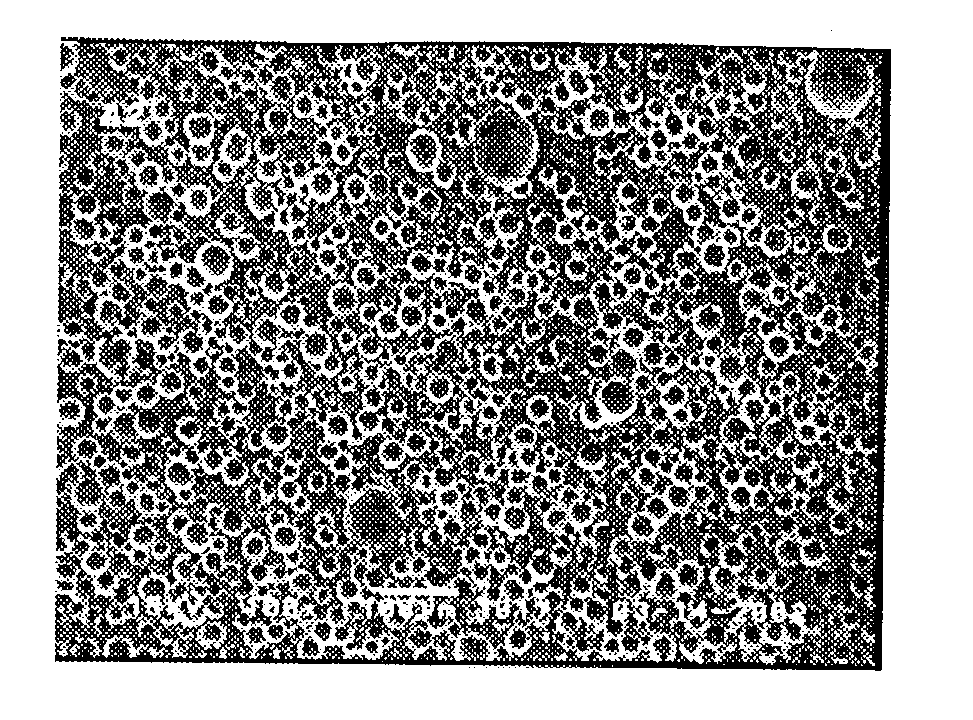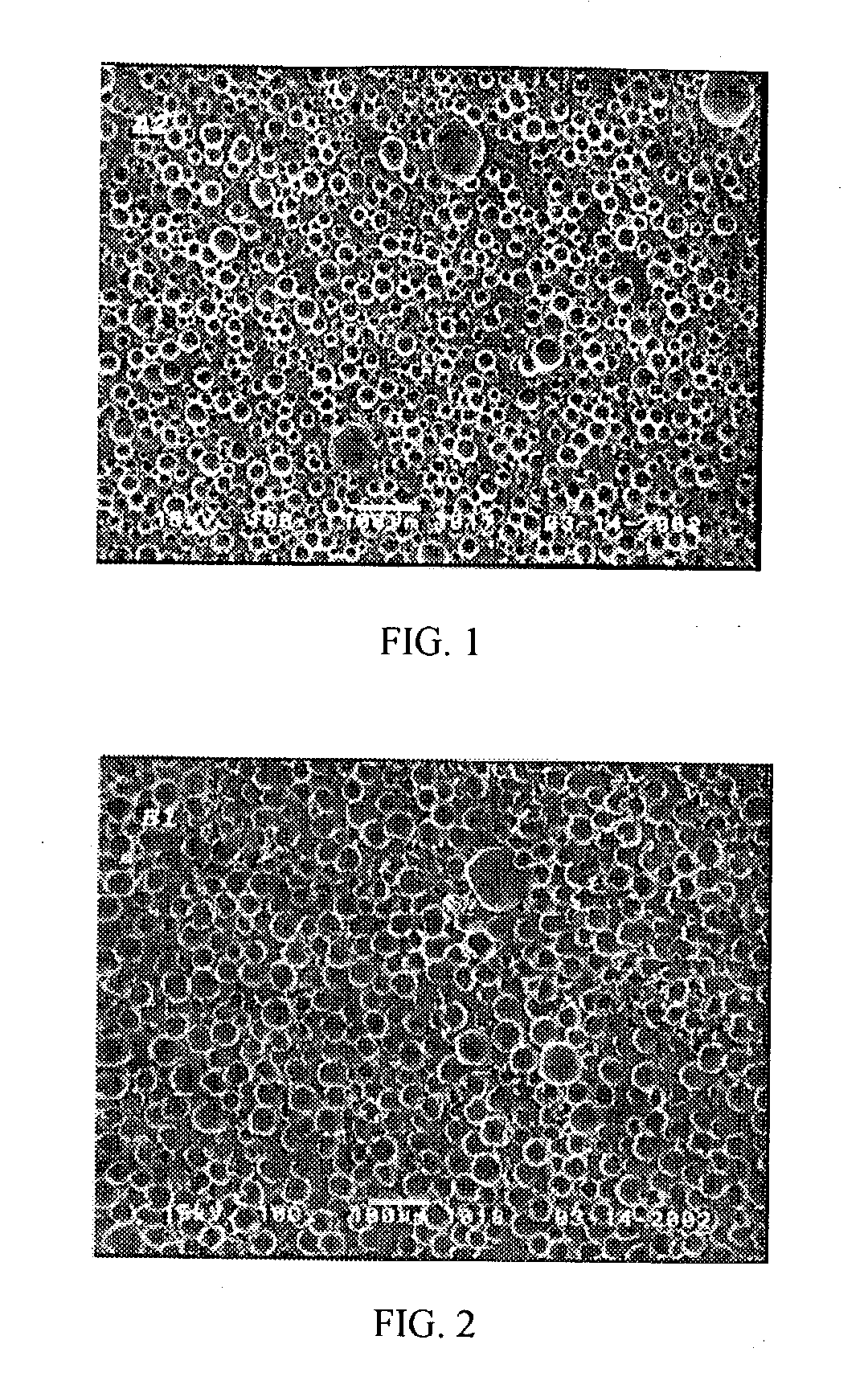Method for manufacturing auxiliary gas-adding polyurethae/polyurethane-urea polishing pad
- Summary
- Abstract
- Description
- Claims
- Application Information
AI Technical Summary
Benefits of technology
Problems solved by technology
Method used
Image
Examples
example 2
[0029]
3 Formula wt. % Polyester polyol (Mw = 1000) 84 Ethylene glycol 16 Organic amine catalyst 1.0 Water 0.2 Siloxane foam stabilizer 1.0 MDI isocyanate prepolymer (NCO = 29.5%) 100
[0030] In Example 2, raw materials are used at 55.degree. C., and incorporated with air of 12 vol. %. Mold temperature is 60.degree. C., and operation pressure of a reaction injection-molding machine is 15 MPa. Bubble continuity and uniformity can be well observed through the use of a scanning electronic microscope (SEM), as shown in FIG. 1. By the above formula and conditions, physical properties of fabricated products are measured as follows.
4 Tensile strength (MPa) 19 Elongation (%) 180 Hardness (shore-D) 60 Density (g / cm.sup.3) 0.7 Compressibility (%) 0.98
example 3
[0031]
5 Formula wt % Polycaprolactone polyester (Mw = 1000) 84 Ethylene glycol 16 Organic amine catalyst 0.45 Pentane 6 Siloxane foam stabilizer 1.0 MDI isocyanate prepolymer (NCO = 28%) 100
[0032] In Example 3, raw materials are used at 50.degree. C., and incorporated with air of 15 vol. %. Mold temperature is 60.degree. C., and operation pressure of a reaction injection-molding machine is 15 MPa. Bubble continuity and uniformity can be well observed, as shown in FIG. 2. By the above formula and conditions, physical properties of fabricated products are measured as follows.
6 Tensile strength (MPa) 17.8 Elongation (%) 156 Hardness (shore-D) 58 Density (g / cm.sup.3) 0.7 Compressibility (%) 1.01
[0033] In the above examples, by using various chain extender, amount of foaming agent and injected amount into a metallic mold, different density and hardness can be obtained as well as physical properties and parameters can be further modulated for the fabricated PU polishing pad.
PUM
| Property | Measurement | Unit |
|---|---|---|
| Linear density | aaaaa | aaaaa |
| Pressure | aaaaa | aaaaa |
| Pressure | aaaaa | aaaaa |
Abstract
Description
Claims
Application Information
 Login to View More
Login to View More - R&D
- Intellectual Property
- Life Sciences
- Materials
- Tech Scout
- Unparalleled Data Quality
- Higher Quality Content
- 60% Fewer Hallucinations
Browse by: Latest US Patents, China's latest patents, Technical Efficacy Thesaurus, Application Domain, Technology Topic, Popular Technical Reports.
© 2025 PatSnap. All rights reserved.Legal|Privacy policy|Modern Slavery Act Transparency Statement|Sitemap|About US| Contact US: help@patsnap.com


